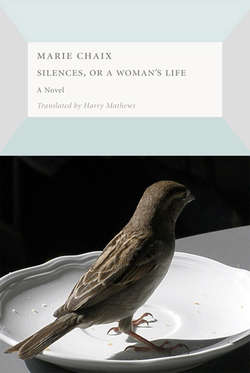Читать книгу Silences, or a Woman's Life - Marie Chaix - Страница 8
На сайте Литреса книга снята с продажи.
ОглавлениеAnyone who hadn’t known her “before” and who saw her for the first time after she had become (as she liked to say) a “professional invalid” had a hard time imagining what her life had been like. Often enough, age leaves faces cruelly stamped with marks of behavior, accident, or simply the passage of the years. This is why studying an unfamiliar face is so fascinating: the features are shaped according to a formula mysteriously suited to each individual, according to a subterranean progress whose reflection, as it blooms or withers, becomes the “expression” of that face, tinged variously with sorrow, boredom, resignation, or discouragement, or, on the contrary, with vitality, gaiety, and optimism. An aging face is a pathetic appeal uttered unawares by someone’s past experience. Show me your wrinkles, your wounds, and the circles under your eyes, and I may start learning who you were.
Her face provided few clues. Through what miracle, through what special dispensation of time had it preserved the invulner-ability of a sensible, smiling statue? She had her secrets; but her vanity was boundless. It was hard to believe the pleasure she took in misleading her occasional visitors. She would deploy a subtle charm, all restraint, sweetness, and warmth, soothing glances and words. People went away astonished, without a thought for her faltering gestures and fettered body. “The woman has probably suffered, but something like grace has seen her though” is what they would be thinking, remembering only the brightness of her clear gaze, whose liquid placidity perfectly concealed the rugged terrain that had taken what seemed like centuries to traverse.
Her old age had caught us unprepared. One day when she was still youthful, something—perhaps some grief too intense to be borne—made her stumble and, for many a long day, go blank. “Coma” was the medical term for this passage through the land of mists. Against every expectation, the sleeper then came back to life—a life on which she opened her eyes without recognizing it. Henceforth she would walk with a cane; she would never again run her fingers over the keys—oh, everything she now would lack was too much to take in at a glance. But she would have plenty of time to think about it, now that she was old.
In a matter of days—for her, countless centuries of sleep—she had gone to the end of the bleak sunset path where people usually adopt successive disguises, planning stops along the way so as to ultimately get used to the imperceptible changes that from year to year transform them into other people.
She woke up from her journey tired and wobbly, astonished at having become that “someone else,” that person on the far side of things, on the downhill side of things, the nebulous ghost that waits for each of us someplace else, farther on, later, but inescapably there, with white hair, sunken eyes, slow gestures, the shawl worn all year round.
For a long time she refused to look in a mirror. She would mumble, “What do I look like? What’s happening? Half my face feels like marble.” Did she sometimes think, “Better not to have woken up”?
She never let on. To all appearances, she was ready to play her new role of dignified old lady without a murmur.
Having known her “before,” I still saw her youth amid the marks of age. Two women walked together on the frontiers of dream, sometimes losing sight of one another, sometimes reuniting and merging into one. In the depths of her unaltered gaze and grave voice, she fitfully summoned up the memory of the woman who had deserted her body but now sprang forth, obscurely and fortuitously, in the glint of a green eye or the lilting sparkle of her words.
For a long time, sheltered by her glance, I did not see that she was growing old. It was no doubt to protect myself from the grief I felt at her sudden illness that, with her help, I learned overnight to love another woman; noticing, it’s true, how spent her gestures and how slow her movements had become, but interpreting this as a role she had ingeniously contrived, an artful stratagem that allowed her to conceal whatever it was in her that had lost its vigor.
The tapestries, the woodwork, the jumble of cloth that surrounded her formed an enclave untouched by the city and by time, a place where an ageless woman on the fringe of things was living an unreal old age. The doctors—they always knew best—said that normally she should have succumbed to her attack. And yet here she was, a goddess of pearl-embroidered velvet, living out a present that would have been denied her if she hadn’t hung on to it with every ounce of her strength, constructing and reconstructing a past that she did not blame for having abandoned her.
